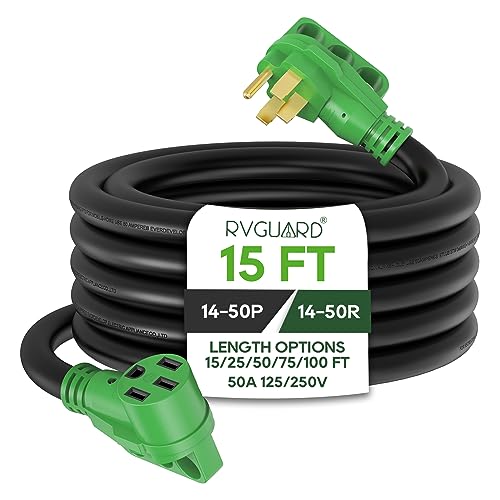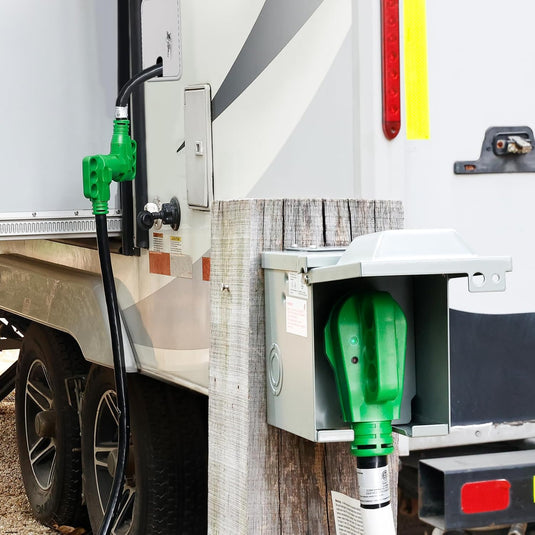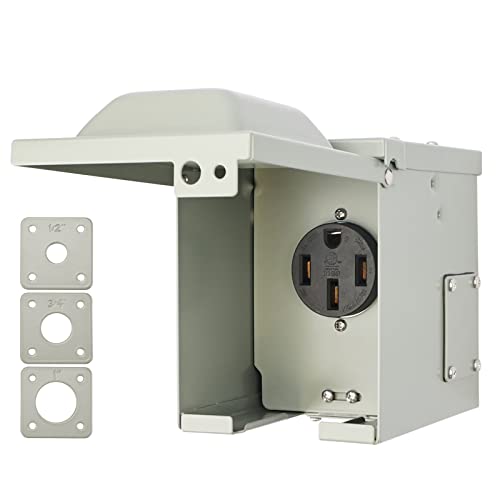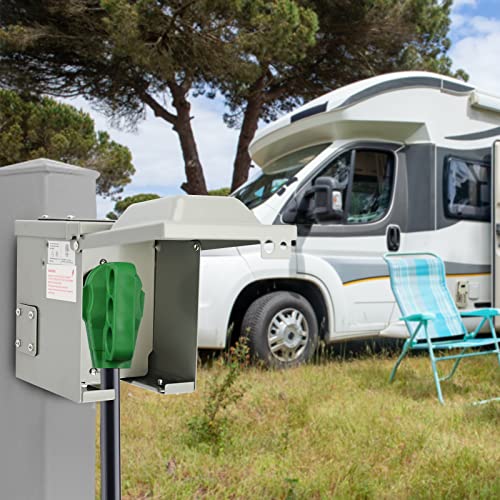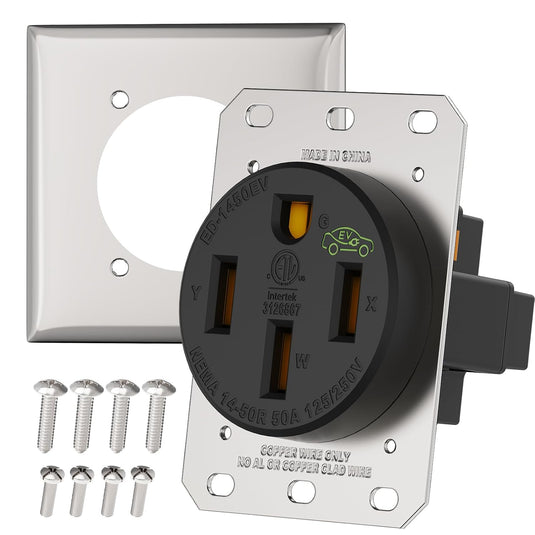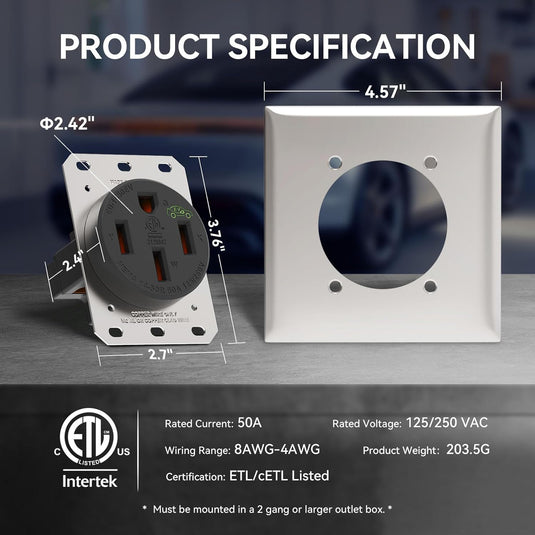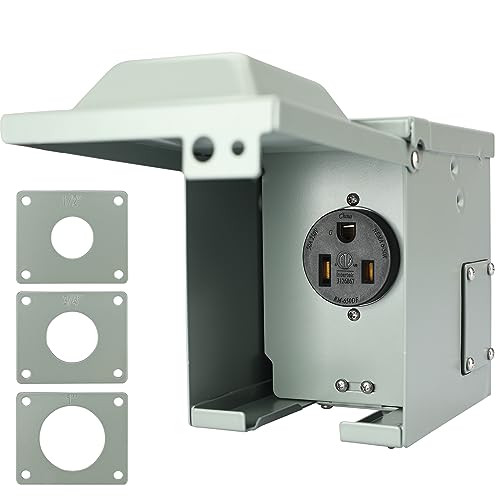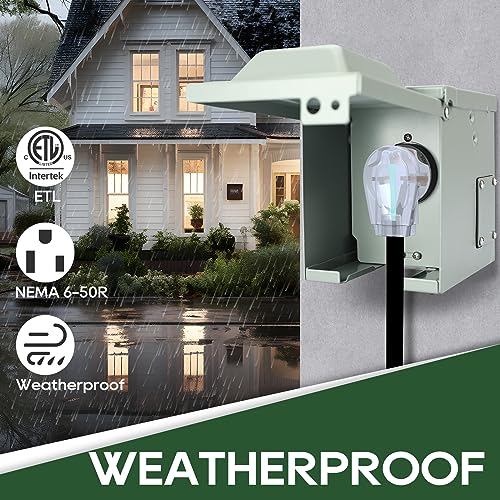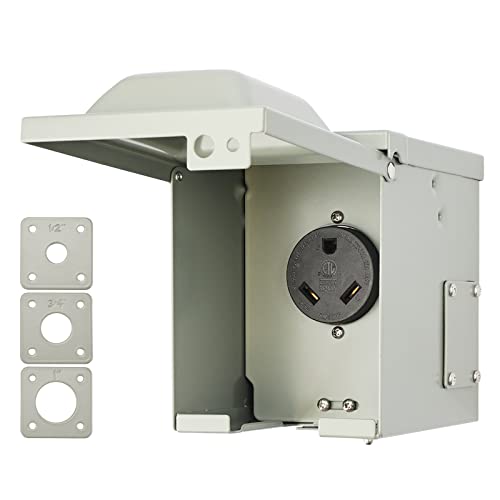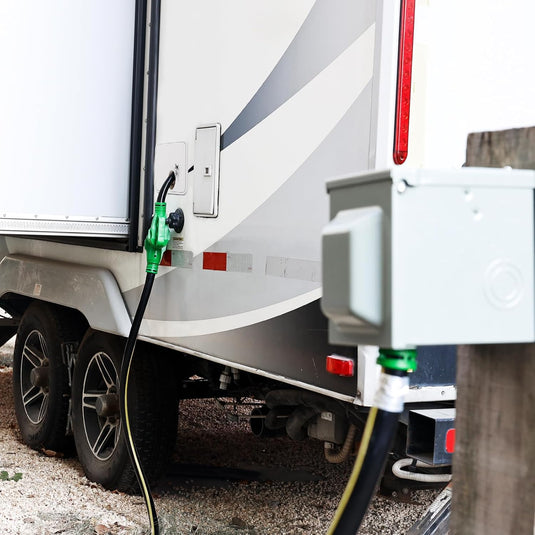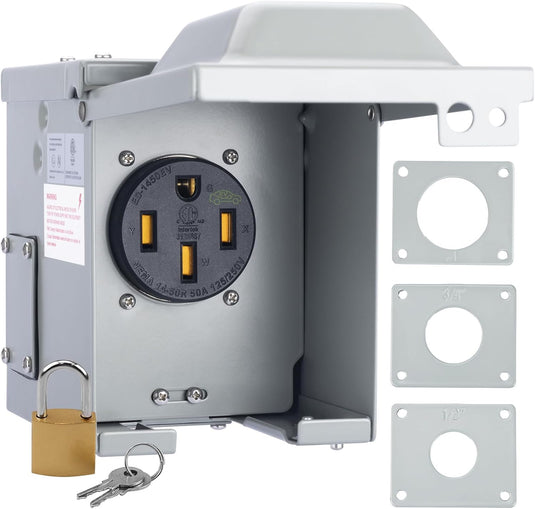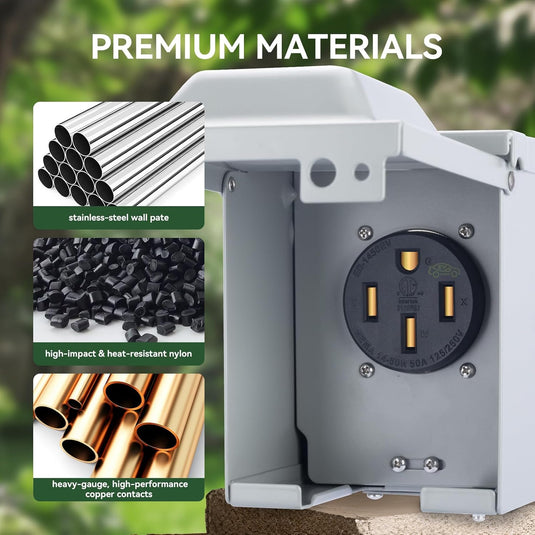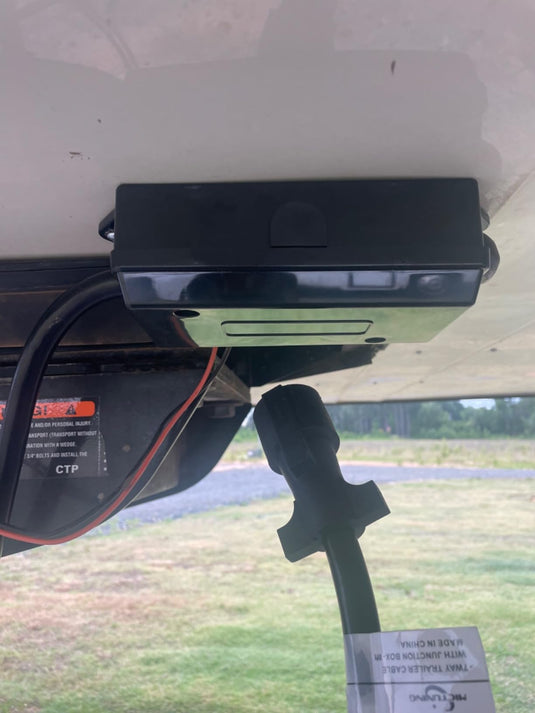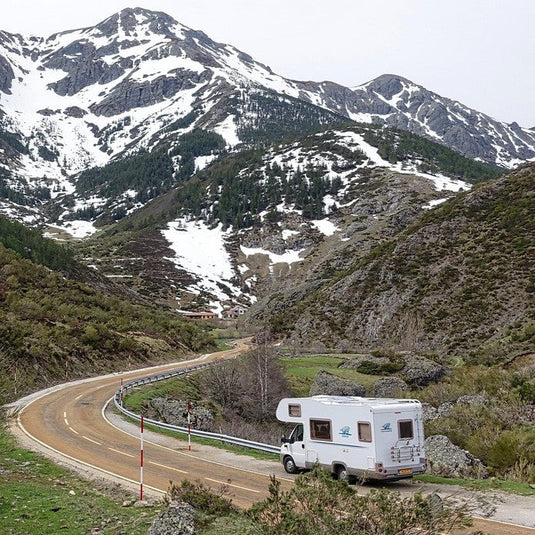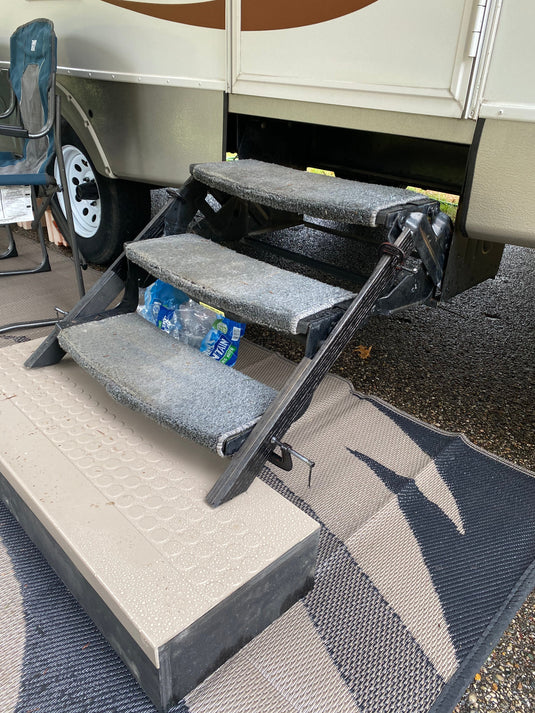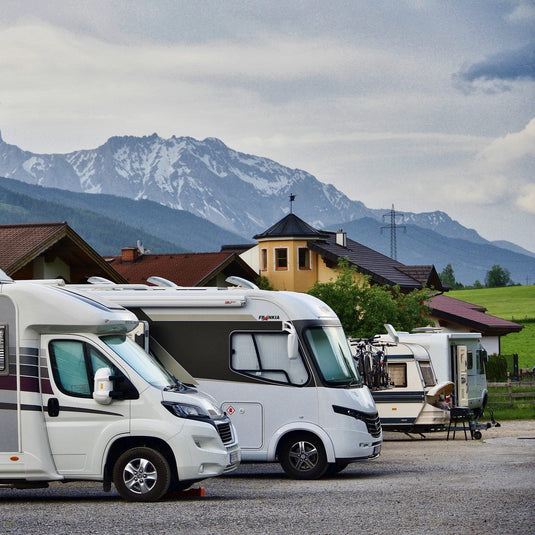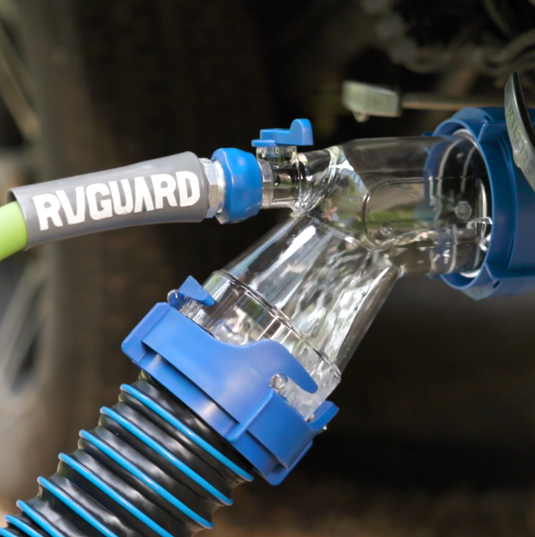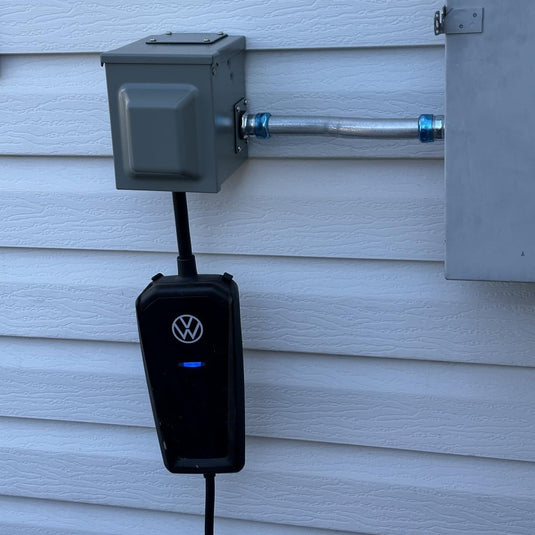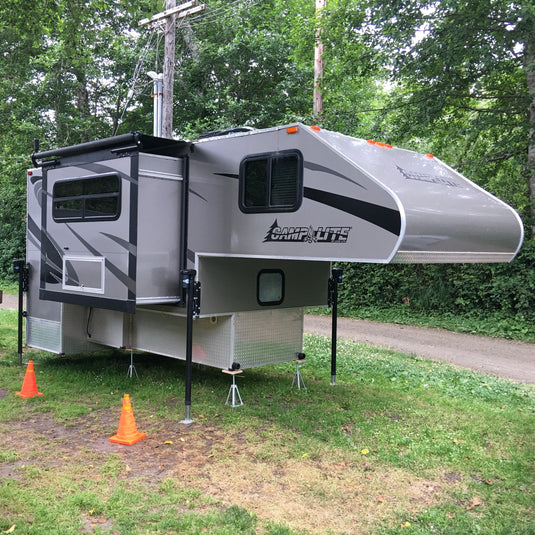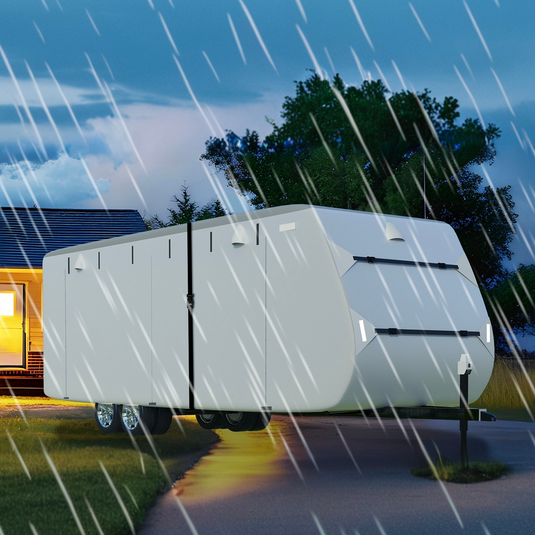Welcome to the exciting world of RVing and electric vehicle ownership! The open road and silent, emission-free driving await. But first, let's tackle the most common and crucial question: "How do I power this thing at home?"
Setting up a safe, reliable home charging station doesn't require an electrical engineering degree. It just requires knowing about three key products and avoiding three all-too-common (and expensive) mistakes. This guide will walk you through it all.

The 3 Essential Products for Your Home Power Hub
Think of your power setup as a team where each member has a specific, critical job.
1. The Permanent Power Station: The Heart of Your Setup
This isn't just an outlet; it's the high-power foundation everything else connects to. This category includes two products that work together:
- The Brains (& Brawn): The 50 Amp RV Outlet EV Charger (NEMA 14-50R Receptacle). This is the actual socket, engineered to handle the continuous, high demand of charging an EV or powering an RV. Its heavy-duty construction, high-performance copper contacts, and ETL certification make it the best NEMA 14-50 outlet for EV charging and RV use.
- The Body Armor: The 50 Amp RV Outlet Box EV Charger. This is the rugged, weatherproof case that protects the outlet. It's made from powder-coated metal with a waterproof gasket, designed to withstand rain, sun, and dust.
How They Work Together
- For Outdoor Installations (Highly Recommended): You install the Outlet inside the Outlet Box. This creates a professional, durable, and safe RV power outlet for your driveway or side yard.
- For Indoor Garage Installations: You can install the Outlet into a standard indoor metal electrical box. The Box is optional but still adds a layer of protection.
2. The Flexible Extension: Your Reach Solution
Even with a perfect RV outlet, your vehicle might not always park right next to it. That's where a proper RV power cord comes in.
- The Product: 50 Amp RV Extension Cord.
- The Job: To safely extend your reach without compromising power or safety. This is not a standard outdoor extension cord you'd use for Christmas lights. It's a thick, heavy-duty cable with a NEMA 14-50P plug on one end and a NEMA 14-50R receptacle on the other, specifically rated for the high amperage needed.
- Key Benefit: It’s the DIY-friendly, plug-and-play solution that gives you flexibility for different parking situations.
The 3 Costly Mistakes to Avoid
Now that you know what you need, let's talk about what you must avoid.
Mistake #1: Using a Cheap, Thin Extension Cord
- The Error: Grabbing a lightweight, common household extension cord (like one rated for 16A) to try and charge your car or RV.
- The Risk: FIRE. These cords cannot handle the sustained 30-50 amp load. They will overheat, melt, and potentially ignite. This is the most dangerous mistake you can make.
- The Solution: Always use a purpose-built 50 amp RV extension cord. Its thick gauge wiring is designed to carry the load safely, making it the only safe extension cord for EV charger or RV use.
Mistake #2: Ignoring the Weather
- The Error: Mounting a standard indoor-grade outlet outside without any protection.
- The Risk: Electrocution, Short Circuits, and Corrosion. Water and electricity are a deadly mix. Rain and humidity will lead to rust, failed components, and dangerous electrical faults.
- The Solution: Any outdoor installation must use a dedicated RV outlet box. This sealed metal enclosure protects the sensitive internal connections from the elements, ensuring years of safe operation.
Mistake #3: Overloading a Weak Connection
- The Error: Using an old, worn-out, or low-quality outdoor receptacle at its maximum rating for hours on end (like overnight charging).
- The Risk: Melted Plugs & Costly Damage. Poor connections have high electrical resistance. Resistance creates intense heat. This heat can melt the plug on your EV's charger or your RV's power cord, damaging hundreds of dollars worth of equipment.
- The Solution: Invest in a high-quality, ETL-listed 50 amp RV outlet from the start. Its superior materials and tight connections minimize resistance and heat buildup, protecting your vehicle's equipment and ensuring efficient charging.

Your Simple Shopping List
- The Ultimate Outdoor Setup: Outlet Box + Outlet + Extension Cord
- The Basic Indoor Setup: Outlet (in a standard box) + Extension Cord
- The Flexibility Upgrade (For Everyone): 50 Amp Extension Cord
Charge With Confidence
Your new RV or EV is a significant investment. Protect it by powering it correctly from day one. By choosing the right products and avoiding these common pitfalls, you can ensure every adventure begins and ends with a full "tank," safely and reliably.
Ready to Build Your Safe Power Setup?
Explore our collection of professional-grade RV and EV power products designed for safety and performance.


